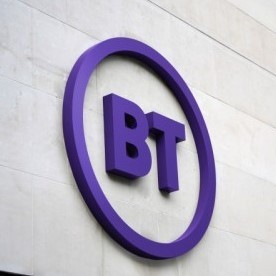BT working on closure of 4,500 exchanges
BT provides an update on its network strategy, with a focus on Network Cloud, edge computing – and open RAN 'when it shows benefits.'

BT's chief technology officer Howard Watson acknowledged that energy has become "front of mind" over the last nine to 12 months, as gas and electricity prices soar around the world.
BT uses hedging as its primary instrument to protect itself from energy headwinds. At the same time, the group's "aggressive strategy" to switch off legacy equipment is also expected to play a major role in reducing overall energy demand.
Speaking during this week's BT Networks Business Briefing, Neil McRae, BT's chief architect, noted that switching off older systems, including the 3G network, the PSTN and copper broadband networks, will ultimately allow the group to turn off or close around 4,500 exchanges.
Figure 1:  (Source: BT)
(Source: BT)
"If you were to build BT today, you'd build it with 1,000 exchanges, 1,000 central offices across the country. That allows a huge win on energy [and] our run costs … We're piloting the closure of five exchanges right now … to understand the ramifications of that and to make sure that we take customers on that journey with us," McRae said.
Watson noted that the PSTN switch off and planned migration to Digital Voice by 2025 is the biggest element of this transformation process.
"You will have heard recently we've had to pause … migrations to Digital Voice and we're looking at how we can restart that quite quickly once we've got the right battery backup solutions in place," Watson said.
In March, BT conceded that the rollout of Digital Voice – which sees users connecting their handset to a broadband router rather than a traditional phone socket – had been implemented too early for many customers.
Despite all the ongoing transformation measures, Watson said that BT wouldn't see a significantly large number of exchanges being completely freed up before the end of the decade.
"We have actually selected around 100 that we think are some of the prime buildings … we intend to get out of that 100 between now and the end of the decade," he said. The bulk of the changes will then take place between around 2030 and 2036.
"We have a vast variety of exchanges from enormous buildings … down to really tiny little, little huts in many respects," Watson added.
Network cloud
Looking ahead to key focus areas for the BT networks team, McRae highlighted the operator's focus on its Network Cloud platform and the creation of a highly automated, scalable network that is more responsive to customer demands.
"We have this platform up and running and serving many of our network applications today. We're in 12 locations across the BT network, over 2,000 servers. And it's all software driven. We're leveraging the latest in telemetry and API-based technology, and cloud-native technology to enable a platform that scales as we need it," he said.
McCrae added: "Further to that, what the Network Cloud really allows us to do is create network-as-a-service. This is where the network itself becomes an object in programming … through APIs, you're able to set up a network capability, leverage it in the way that you want and then stop using it."
In terms of edge computing, McRae described the edge as "the place where we bring customers together."
"And we're really well placed. We've got 100 very high bandwidth core sites across the UK with 1,000 tier one exchanges that are also very well connected and … close to customers, both from a fixed network point of view, but also from a 5G point of view," he added.
Want to know more about 5G? Check out our dedicated 5G content channel here on Light Reading.
However, McRae retains his traditional skepticism about deploying open RAN any time soon.
"From a network leadership point of view, we're only going to deploy it when we know it is 100% as effective, if not more effective, than what's available today. And that's something that we don't apologize for frankly, we're only going to deploy it when it shows benefits," McRae said.
He also noted that BT is "very dubious" about whether open RAN will bring a cost advantage.
"If you take one of these open RAN boxes and open it up, you see all the same components that you get from a Nokia or an Ericsson or a Samsung. So the underlying componentry is the same," he added.
McRae pointed out that BT is nevertheless highly engaged in open RAN research and development. "We've got hundreds of people working on open RAN and testing and contributing to the standard as a whole."
— Anne Morris, contributing editor, special to Light Reading
Read more about:
EuropeAbout the Author(s)
You May Also Like












